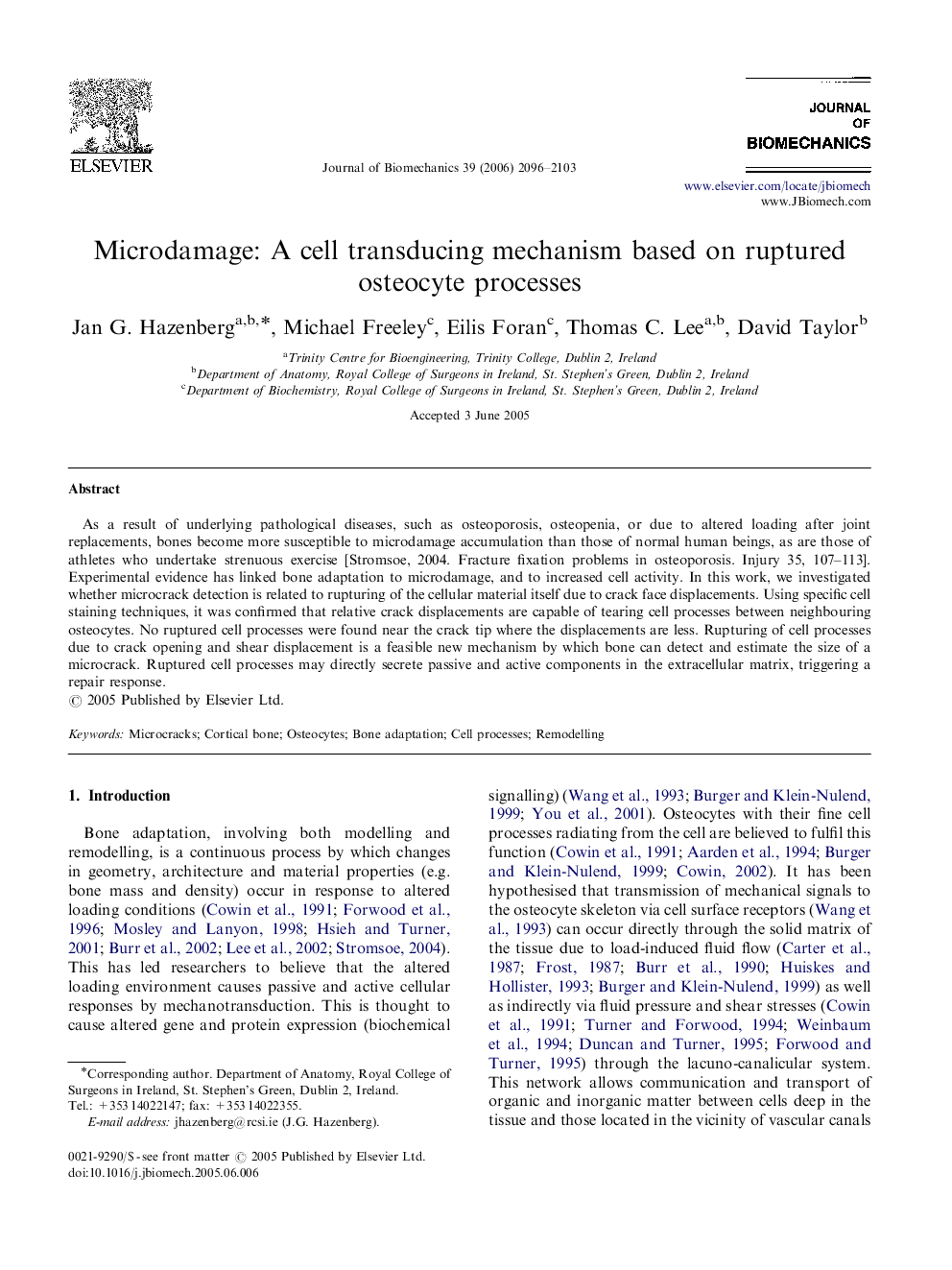| Article ID | Journal | Published Year | Pages | File Type |
|---|---|---|---|---|
| 875420 | Journal of Biomechanics | 2006 | 8 Pages |
As a result of underlying pathological diseases, such as osteoporosis, osteopenia, or due to altered loading after joint replacements, bones become more susceptible to microdamage accumulation than those of normal human beings, as are those of athletes who undertake strenuous exercise [Stromsoe, 2004. Fracture fixation problems in osteoporosis. Injury 35, 107–113]. Experimental evidence has linked bone adaptation to microdamage, and to increased cell activity. In this work, we investigated whether microcrack detection is related to rupturing of the cellular material itself due to crack face displacements. Using specific cell staining techniques, it was confirmed that relative crack displacements are capable of tearing cell processes between neighbouring osteocytes. No ruptured cell processes were found near the crack tip where the displacements are less. Rupturing of cell processes due to crack opening and shear displacement is a feasible new mechanism by which bone can detect and estimate the size of a microcrack. Ruptured cell processes may directly secrete passive and active components in the extracellular matrix, triggering a repair response.
